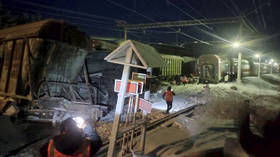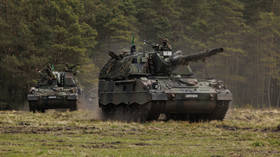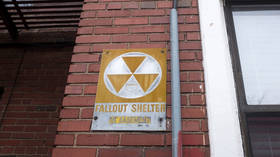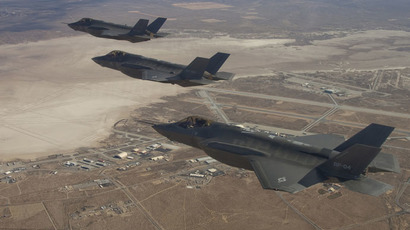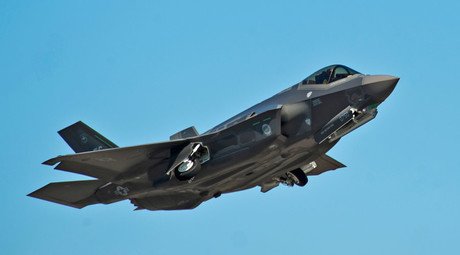Failed ‘flying saucer’ program lives on in Marines’ F-35
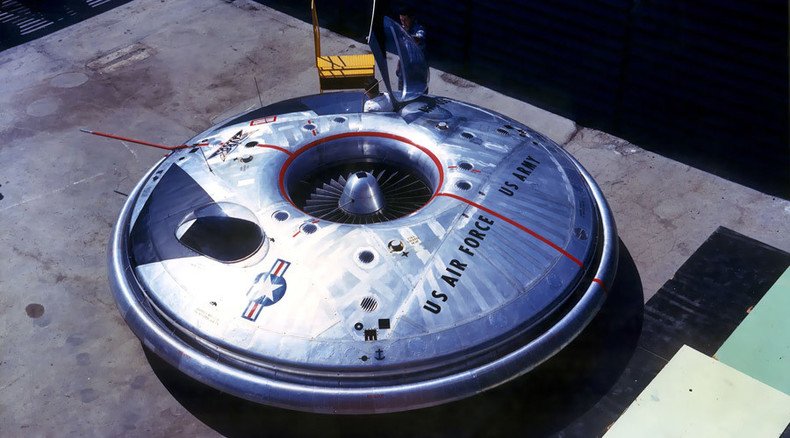
At the heart of the US Marine Corps’ newest fighter jet is a lifting fan born from a failed Cold War experiment to design "flying saucers." Though the $10 million project was canceled in 1961, the concept was eventually built into the F-35B.
Each of the Marines’ F-35Bs costs around $134 million, compared to the $108 million and $129 million, respectively, for the Air Force and Navy models. One reason for the price differential is that the F-35B needs to have the ability to take off and land on the decks of the USMC’s amphibious assault carriers.
To achieve this, the F-35B relies on a lifting fan, a technology that grew out of a 1950s experiment to develop “flying saucers.” As three Brazilian researchers documented in a paper recently submitted to the Cornell University Library, the project was ultimately unsuccessful, but the technology lived on.
One of the F-35's most expensive features was made possible by flying saucer http://t.co/h2LuwjJQH3pic.twitter.com/uo4ev8csJs
— Perry Lohr (@PerryLohr2) August 11, 2015According to Desire Francine Gobato Fedrigo, Ricardo Gobato and Alekssander Gobato, between 1954 and 1961, the US Air Force spent $10 million – almost $100 million in today’s dollars – to fund the “Avrocar,” a disc-shaped aircraft that was developed by Avro Canada.
Envisioned as a “flying jeep” serving NATO’s militaries on Cold War battlefields, the Avrocar was powered by a giant central fan. In practice the Avrocar proved unreliable, unstable, and uncontrollable. It was also unwieldy, taking five seconds to make a 90-degree left turn but 11 seconds to turn to the right, presumably because of the central fan’s momentum. It was also prone to overheating, making the pilot “almost unbearably uncomfortable” and contributing to instrument failure.
With helicopters already providing the desired functionality of the Avrocar, the USAF canceled the project in 1961. The lifting fan concept lived on, however, inspiring the General Electric “Vertifan” propulsion system, which, in turn, served as the basis for the lifting fans on the F-35, the Gobatos wrote.
Currently the US Marine Corps uses AV-8B Harrier II “jump jets,” an evolution of a 1960s British design that relies on vectored thrust to achieve near-vertical takeoffs and landings. The F-35B is supposed to replace the Harrier in USMC service by 2025.
Pentagon’s F-35 stealth jet can’t win dogfight – report http://t.co/kH0e0cqLmSpic.twitter.com/Y92sLeKSaB
— RT America (@RT_America) June 30, 2015On July 31, the USMC declared that the F-35B achieved “initial operational capability,” though its first deployment is not scheduled until 2017.
“The F-35B’s ability to conduct operations from expeditionary airstrips or sea-based carriers provides our nation with its first fifth-generation strike fighter, which will transform the way we fight and win,” USMC Commandant General Joseph Dunford said in a statement.
Lockheed Martin’s F-35 project, dubbed “Lightning II,” has racked up over $400 billion in costs since it began 15 years ago. The most recent combat test of the aircraft found a series of flaws that make it inferior in combat to the existing F-16 fighter, which was first built in the 1970s, in almost every respect.
A five-page report by the test pilot found the F-35 had a canopy so small the pilot could not turn around to adequately see behind the aircraft. The F-16 easily dodged fire from the newer plane’s onboard cannons, and the F-35 could not climb or maneuver well enough to catch the older plane, remaining “at a distinct energy disadvantage for every engagement.”





